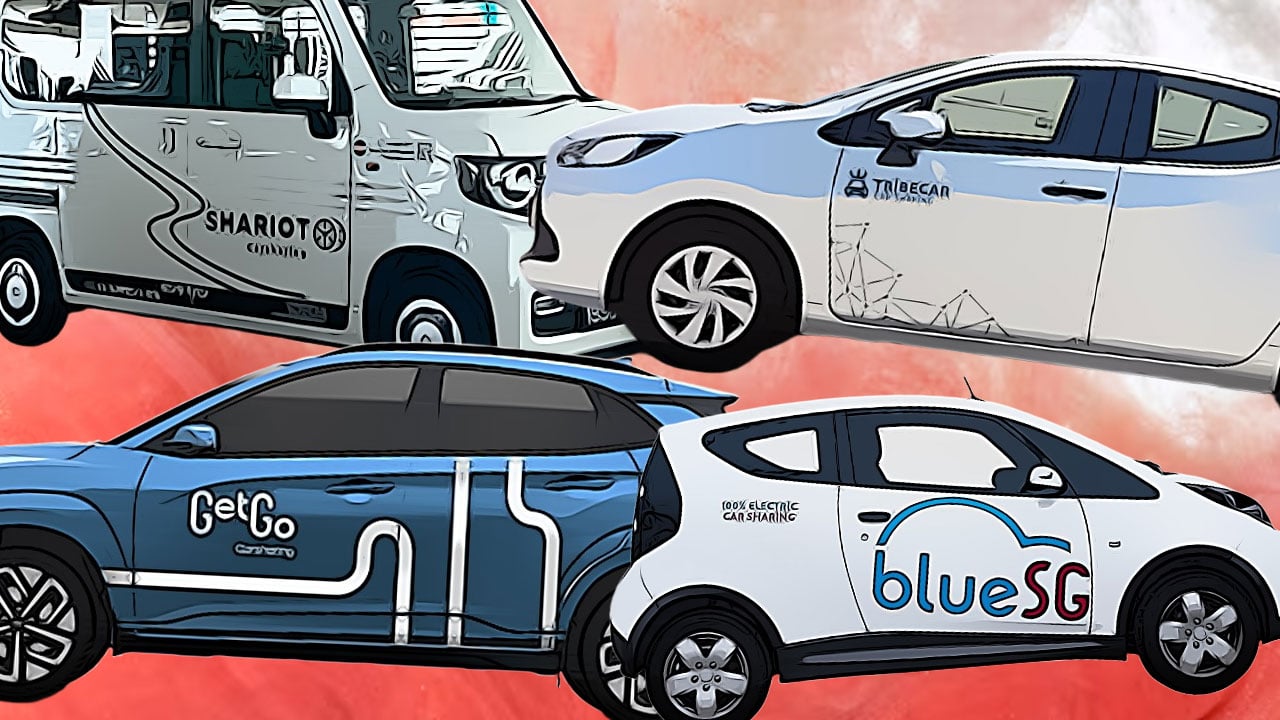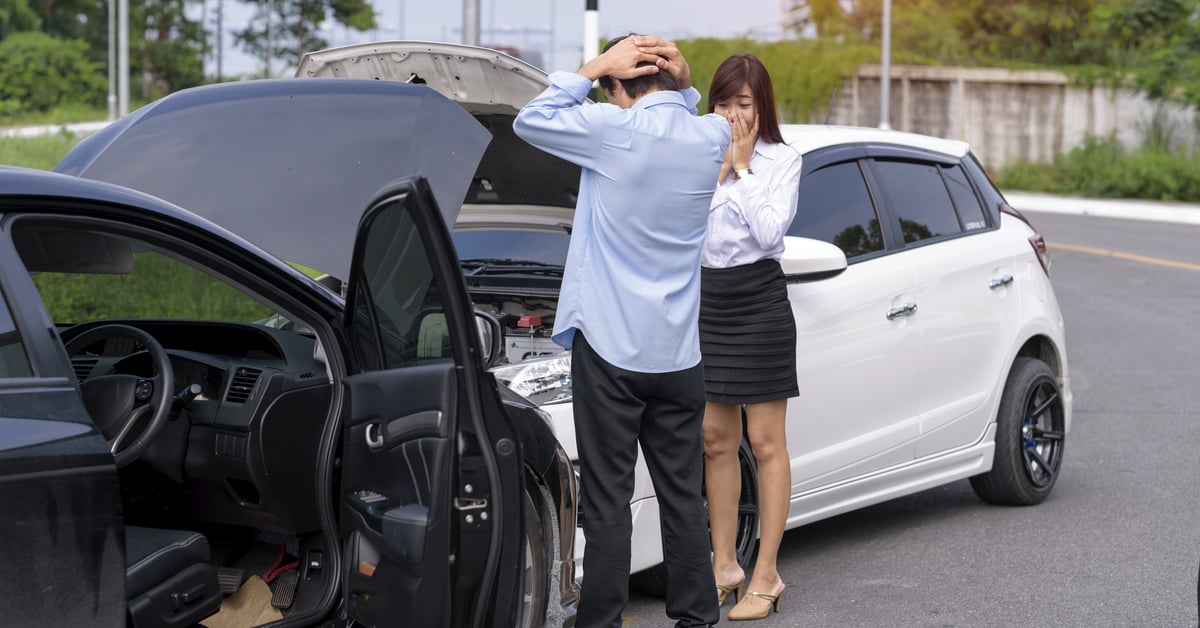Did you know that car-sharing in Singapore is so popular that its user penetration is one of the highest worldwide, hovering around 7%?
Yup, that explains why you often spot these cars, like TribeCar, GetGo or BlueSG, cruising around the island.
But how much do you really know about them, and why is their insurance excess so darn pricey?
Keep reading, and you’ll soon find out.
But if you prefer to watch a video about this topic instead, here’s one that we’ve done:
The Cost-Saving Advantage of Car-Sharing in Singapore
Now, here’s a bombshell: sometimes, renting a car-sharing vehicle can be more budget-friendly than hailing a private-hire ride.
Let’s crunch some numbers.
Picture this: it’s a weekend morning, and you’ve got a packed schedule. Your daughter needs a lift to her piano lesson, your wife is headed to her manicure appointment, your son has a taekwondo class to attend, and you’ve got an RT session to tackle (thanks to your love for ngoh hiang).

If everyone opts for a private-hire ride, each trip could cost around $20. With about eight rides in total, you’re looking at a hefty bill of over $160.
But wait, there’s a smarter alternative.
By booking a car-sharing vehicle and playing chauffeur for the day, you could slash your expenses to just $20-$40. Even with petrol or parking costs, you won’t exceed $50 in total.
The savings are crystal clear.
Heck, even if you’re grinding away in the CBD from 8am to 5pm, car-sharing might still be the more economical choice.
During peak hours, the morning private-hire fare can skyrocket to a jaw-dropping $45, and your return trip could be another $45. That’s a whopping $90 in total.
In contrast, you can book a car-sharing vehicle from 7am to 6pm for just $65. Factor in petrol, and you’re looking at around $75. Plus, you get to cruise around in the car all day long.
Of course, there are still parking costs, but with the cost of parking being drastically different in different locations, we’re not going to factor that in (because it might be free if you work in a company that has its own building!).
So, depending on your situation, car-sharing can be a more budget-friendly option than relying on private-hire services.
The only catch? You need a valid driving license, which some of you might not have.
And even if you do, you might be too chicken to get behind the wheel. #justsaying
How Car-Sharing in Singapore Works

If you’re new to the world of car-sharing in Singapore, here’s a quick rundown:
You simply book a vehicle through an app or website (let’s stick with app for simplicity’s sake).
On the day and time of your booking, head to the designated location, which is usually on a sky-high level of a multi-storey car park (don’t worry, there’s usually a lift). Using the app, you can unlock the vehicle remotely.
These car-sharing vehicles come with two locks: the standard car key lock and a remote lock controlled by the car-sharing platform app.
Once you’ve unlocked the car, snap some photos and give it a once-over. Upload the images to the platform so that any pre-existing damage won’t be pinned on you.
From there, you’re free to hit the road as if the car is your own for the entire booking period. The car key is usually waiting for you inside the vehicle (likely inside the glove box).
Just remember to return the car with the same amount of petrol as when you started (usually, the rules are that you return with 1/4 tank or that the low-fuel light shouldn’t be lit up).
There are two types of car-sharing: Point A to A, where you pick up and drop off the car at the same car park, and Point A to B, where you can return the car to a different car park.
In Singapore, only BlueSG offers the Point A to B option.
Now, if it’s such a convenience, why aren’t everyone opting for it?
The Concerns About High Insurance Excess Fees
While car-sharing in Singapore is undeniably convenient and cost-effective for many, there’s one aspect that often raises eyebrows: the sky-high insurance excess fees.
To break it down for those who don’t frequently get behind the wheel:
When you buy a car, insurance is a non-negotiable requirement. If you get into an accident that’s deemed your fault, your insurance provider will typically cover the repair costs for both your vehicle and any other vehicles involved.

However, you’ll need to fork out a small sum known as the excess, which is usually set at $500, regardless of the total repair bill.
For most drivers, that $500 excess fee isn’t the real kicker. The true pain comes when they renew their insurance the following year, and their premiums have shot through the roof.
But at least they won’t be slapped with a heart-stopping repair bill, right? After all, that’s the whole point of insurance.
Now, here’s where things get interesting: car-sharing and rental companies often impose significantly higher excess fees, to the tune of thousands of dollars for each “line” or “section”. Typically, there are two lines: one for repairs to your own vehicle and another for third-party repairs.
So, if you’re unfortunate enough to get into an accident, you could be staring down the barrel of a $10,000 bill for two lines. And if you’re a young or inexperienced driver, brace yourself for even higher fees.
Take Tribecar, for example.
For regular users, the excess is $3,000 for own damage and $3,000 for third-party repairs – and that’s before factoring in GST. New drivers face an even steeper excess of $5,000 per line, totaling up to a whopping $10,000.
The Reasoning Behind the High Excess Fees
To get to the bottom of why these excess fees are so astronomically high, we reached out to a representative from Tribecar for some answers.
When asked about the reasoning behind the hefty excess amounts, the representative explained that they are set in accordance with car rental and car-sharing industry norms.
So, essentially, it boils down to industry standards. Even if you were to rent a regular car from a company, you’d likely face higher excess fees compared to owning your own vehicle.
Some companies do offer the option to pay a bit more upfront for your booking to bring down the excess amount. It’s similar to how regular insurance works – the higher your premiums, the lower your excess tends to be.
Tribecar also encourage users to be extra cautious and safeguard themselves by opting for additional protection like TribeShield or collision damage waivers.
But if you’re a young driver, you might be stuck with higher excess fees no matter what.
At the end of the day, the key is to weigh the pros and cons, crunch the numbers, and make an informed decision based on your individual needs and circumstances.
And if you’re curious about why cars are so darn expensive in Singapore, well, that’s a whole other can of worms. You can watch this video to understand why:




